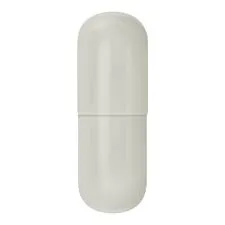
Dec . 04, 2024 15:14 Back to list
Analysis of HPMC Grades and Their Impact on Formulation Performance
The Importance of Grades in HPMC An Overview
Hydroxypropyl methylcellulose (HPMC) is a versatile and widely used cellulose ether that plays a significant role in various industries, including pharmaceuticals, food, cosmetics, and construction. Its unique properties, such as film formation, thickening, emulsifying, and binding, make it a preferred choice among formulators. However, the effectiveness of HPMC is highly influenced by its grade, which refers to the specific characteristics and functionalities that each type of HPMC offers. This article will delve into the different grades of HPMC, their properties, and applications, highlighting the importance of selecting the appropriate grade for desired outcomes.
Understanding HPMC Grades
HPMC is commercially available in various grades, each tailored to meet specific customer needs. The primary classification of HPMC is based on the degree of substitution, viscosity, and molecular weight. The degree of substitution refers to the proportion of hydroxypropyl and methoxy groups that replace the hydrogen atoms in cellulose. Different grades are categorized as low, medium, and high viscosity, which directly impacts their solubility, gelation, and thickening capabilities.
1. Low Viscosity HPMC This grade is typically used as a thickening agent in liquid formulations, such as sauces or drinks. It imparts a desirable texture without significantly altering the flavor or color of the product. Low viscosity HPMC is ideal for products that require a smooth and flowing consistency.
2. Medium Viscosity HPMC This grade exhibits balanced properties and is commonly utilized in both pharmaceutical and food applications. In pharmaceuticals, it serves as a binder in tablet formulations, providing stability and enhancing the release profile of active ingredients. In food, it is employed as a stabilizer and emulsifier in dairy products, dressings, and bakery goods.
3. High Viscosity HPMC High viscosity grades are essential in applications that demand superior thickening and gel-forming properties. In the construction industry, high viscosity HPMC is widely used in mortars and adhesives to improve workability and application efficiency. In pharmaceuticals, it is favored for controlled-release formulations, as it controls the release rate of drugs over time.
The Role of HPMC Grades in the Pharmaceutical Industry
grades of hpmc

The pharmaceutical industry relies heavily on HPMC for its functionality as an excipient in drug formulations. The selection of the appropriate grade is crucial for ensuring the efficacy, stability, and safety of pharmaceutical products. For instance, the use of HPMC in tablet formulations can significantly affect the tablet's disintegration and dissolution rates, influencing how quickly a drug is released into the bloodstream.
In sustained-release tablets, high-viscosity HPMC is often employed to create a gel-like barrier around the drug core, controlling its release over an extended period. Conversely, low-viscosity HPMC may be used to enhance the flowability of powder blends, facilitating better tablet compression. Such precise control over the release characteristics allows formulators to tailor medications to meet specific therapeutic needs.
HPMC Grades in Food Applications
In the food industry, the versatility of HPMC grades enables manufacturers to create diverse textures while maintaining product quality. Low viscosity HPMC is favored in beverages and sauces for its ability to enhance mouthfeel without altering taste. Medium viscosity grades improve the stability of emulsions, preventing phase separation in salad dressings and dairy products.
Moreover, high viscosity HPMC is critical in gluten-free and low-carb baking applications, where it acts as a binding agent, providing structure and texture to baked goods. Its functionality ensures that gluten-free products have the right consistency and moisture retention, making them more appealing to consumers.
Conclusion
The grades of hydroxypropyl methylcellulose (HPMC) serve as a fundamental aspect of its application across various industries. Understanding the specific properties and functionalities of each grade allows formulators to make informed decisions, optimizing product performance and consumer satisfaction. As the demand for innovative formulations continues to grow, the importance of selecting the right HPMC grade will remain pivotal in achieving desired outcomes in both pharmaceuticals and food applications. Thus, the meticulous consideration of HPMC grades is essential for ensuring product efficacy, safety, and overall quality.
-
Versatile Hpmc Uses in Different Industries
NewsJun.19,2025
-
Redispersible Powder's Role in Enhancing Durability of Construction Products
NewsJun.19,2025
-
Hydroxyethyl Cellulose Applications Driving Green Industrial Processes
NewsJun.19,2025
-
Exploring Different Redispersible Polymer Powder
NewsJun.19,2025
-
Choosing the Right Mortar Bonding Agent
NewsJun.19,2025
-
Applications and Significance of China Hpmc in Modern Industries
NewsJun.19,2025







